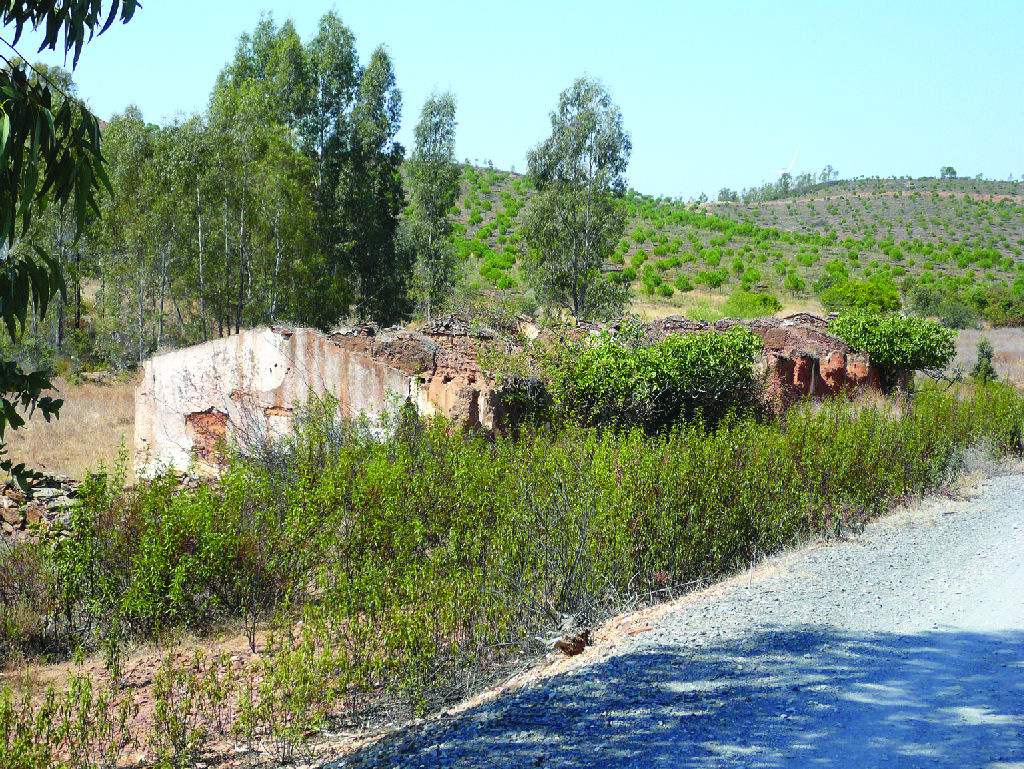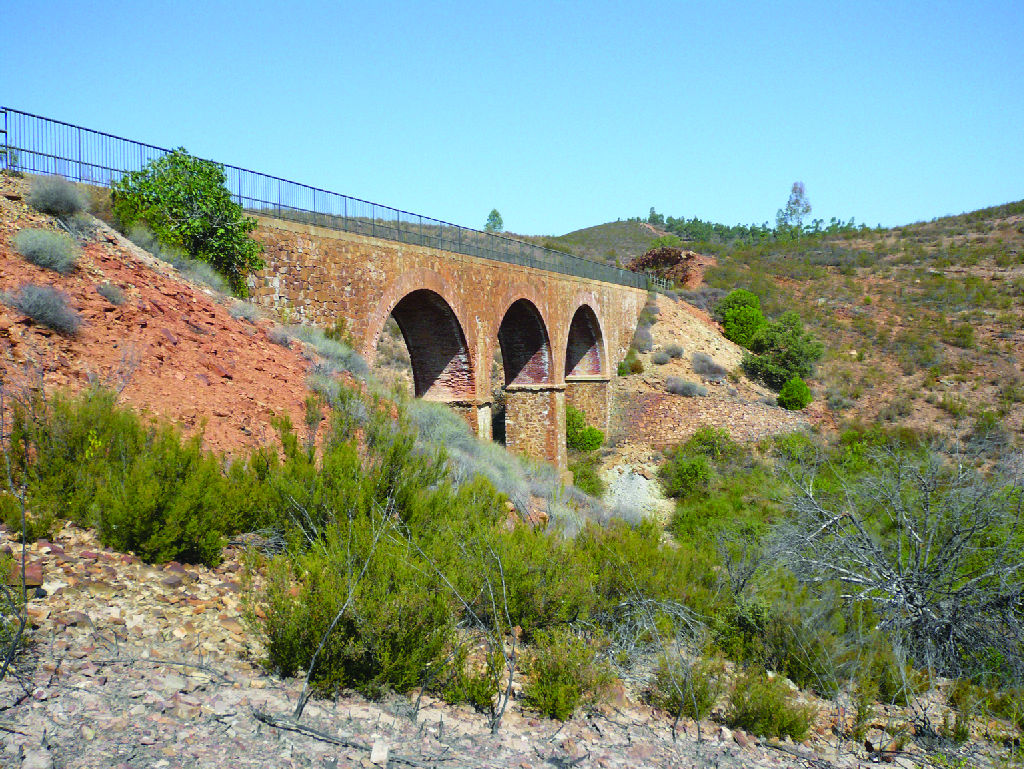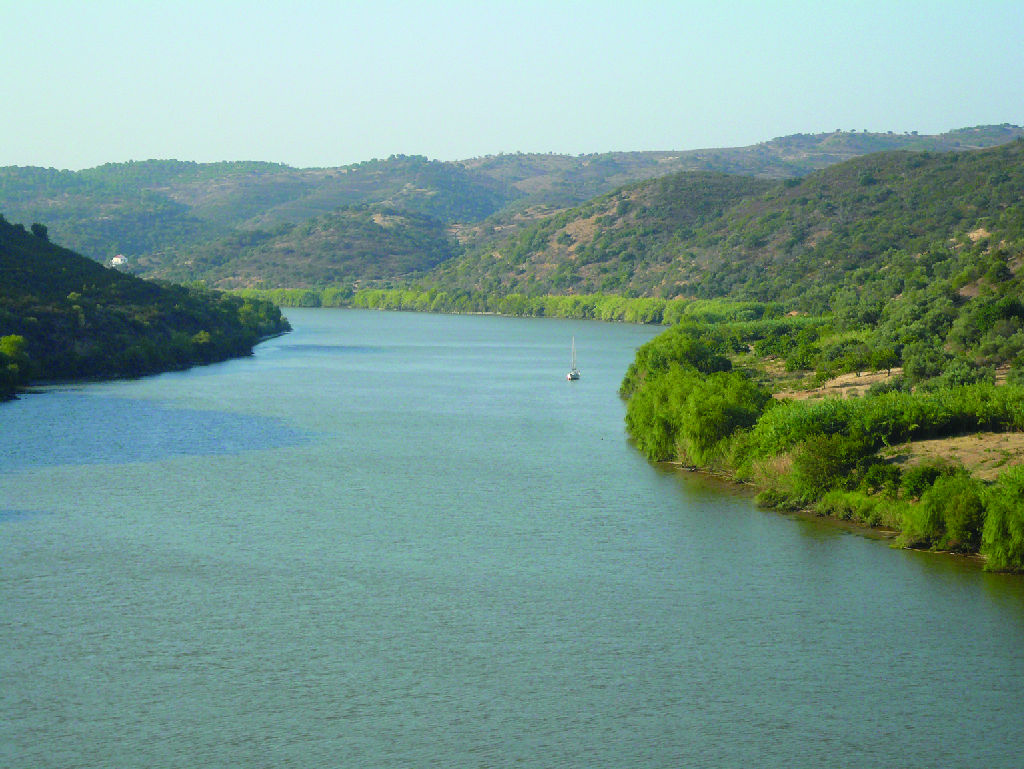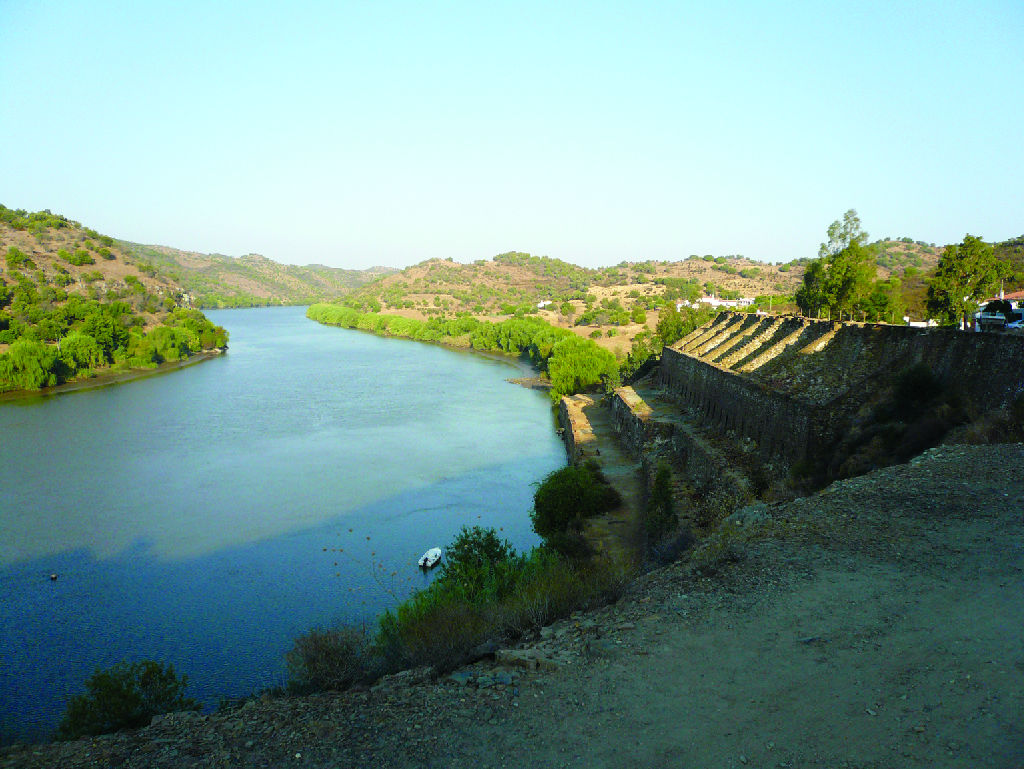- Home
- Rural Development
- Nature Trails
- Nature Trails
- South Sector
- Vía Verde del Guadiana
Guadiana Greenway Nature Trail
Description

Former mining glory
This Trail follows the route of the old mine railway that joined Minas de las Herrerías and Puerto de La Laja for nearly a century. The mineral products transported by this railway from La Isabel Mine enabled Spain to become the largest world producer of manganese in the late nineteenth century, and a major international producer of copper and sulphur.
The Trail begins in La Isabel, a village in the municipality of El Almendro (Huelva), next to the H-9009 road connecting this small village with Puebla de Guzmán. The starting point is properly indicated by a sign and the walkways that border the Trail.
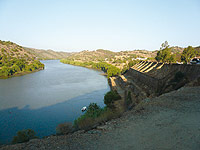
The route ventures into a meadow peppered with a few cork (Quercus suber) and holm oaks (Quercus ilex), and many large mastic trees (Pistacia lentiscus) and kermes oaks (Quercus coccifera). The ground is covered with thick rockrose undergrowth, in particular the sticky variety (Cistus ladanifer), as well as other cistaceae and various heathland species. Hence, rabbits (Oryctolagus cuniculus) and quails (Alectoris rufa), which thrive on these plants, will occasionally run across the Trail.
Raptors such as buzzards (Buteo buteo) and red kites (Milvus milvus) are not uncommon in this landscape. Green belts of elm leaf blackberry (Rubus ulmifolius) and reed (Phragmites australis) indicate the presence of small brooks crossed by small bridges. This mosaic, along with an occasional sign of a "private hunting preserve", raises the possibility of running across other elusive species including deer (Cervus elaphus) and wild boar (Sus scrofa).
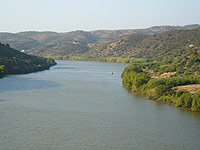
Further along the trail, which sometimes crosses over slate ditches, is a eucalyptus plantation. A more contemporary and very common crop in the province of Huelva, that accounts for almost 40% of the total area in Spain under this tree species from Australia.
At the junction of Camino de los Calizos, about 7 km from the trailhead, a signpost points the way to the nearby Poblado Minero del Sardón. Unlike La Isabel, little more than rubble remains of this village, whose houses were abandoned when mining activity halted. Immediately after the previous intersection is Sardón Station and its rest area. This railway stop was used not only for loading ore from nearby mines, but also for weighing the minerals transported by railway. Little remains of it now except the ruins of two buildings: one originally used for storing ore, and the other as home to the brakeman and the station caretaker.
There are fewer eucalyptus trees (Eucalyptus sp.) as the Nature Trail approaches El Lobo Bridge. One of the most spectacular views of the Trail is this huge Roman bridge with the backdrop of large meadows populated with rockrose, mastic trees and wild olives (Olea europaea var. sylvestris), a few small olive groves and an occasional Iberian pig farm. The Iberian pig is more typical of nearby Sierra de Aracena and Picos de Aroche, but is also bred here.
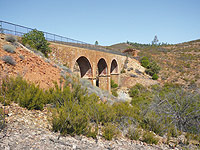
About 500 m from the bridge is a new rest area from where the trail heads to the Parque Eólico de Sardón, whose steel and concrete giants will accompany the Trail for much of the remainder of the route. After crossing two motorways, one parallel to the Canal del Embalse del Chanza, and the other along HV-6400, which connects with El Granado, the route passes through a 25-metre tunnel carved through rock. On exiting the tunnel, the River Guadiana will appear straight in front. Black vultures (Aegypius monachus) from the nearby town of Sierra Pelada often overfly this area. Glimpses can be had from here of Puerto de La Laja, the last navigable section of the Guadiana, with its impressive storage silos and pier for loading ore, a testament to the former economic glory of this site, from where large amounts of manganese and pyrite where shipped worldwide.
It is possible to drive from Puerto de La Laja to El Granado by HV-6400 (9.5 km), or from La Isabel to the nearest town, Puebla de Guzman (10 km). It is also possible to travel from Sardón Station to El Granado via Camino de los Calizos (8.5 km, crossing the Parque Eólico del Sardón. The Guadiana Greenway Nature Trail shares a section with the Guadiana Nature Trail.
Profile
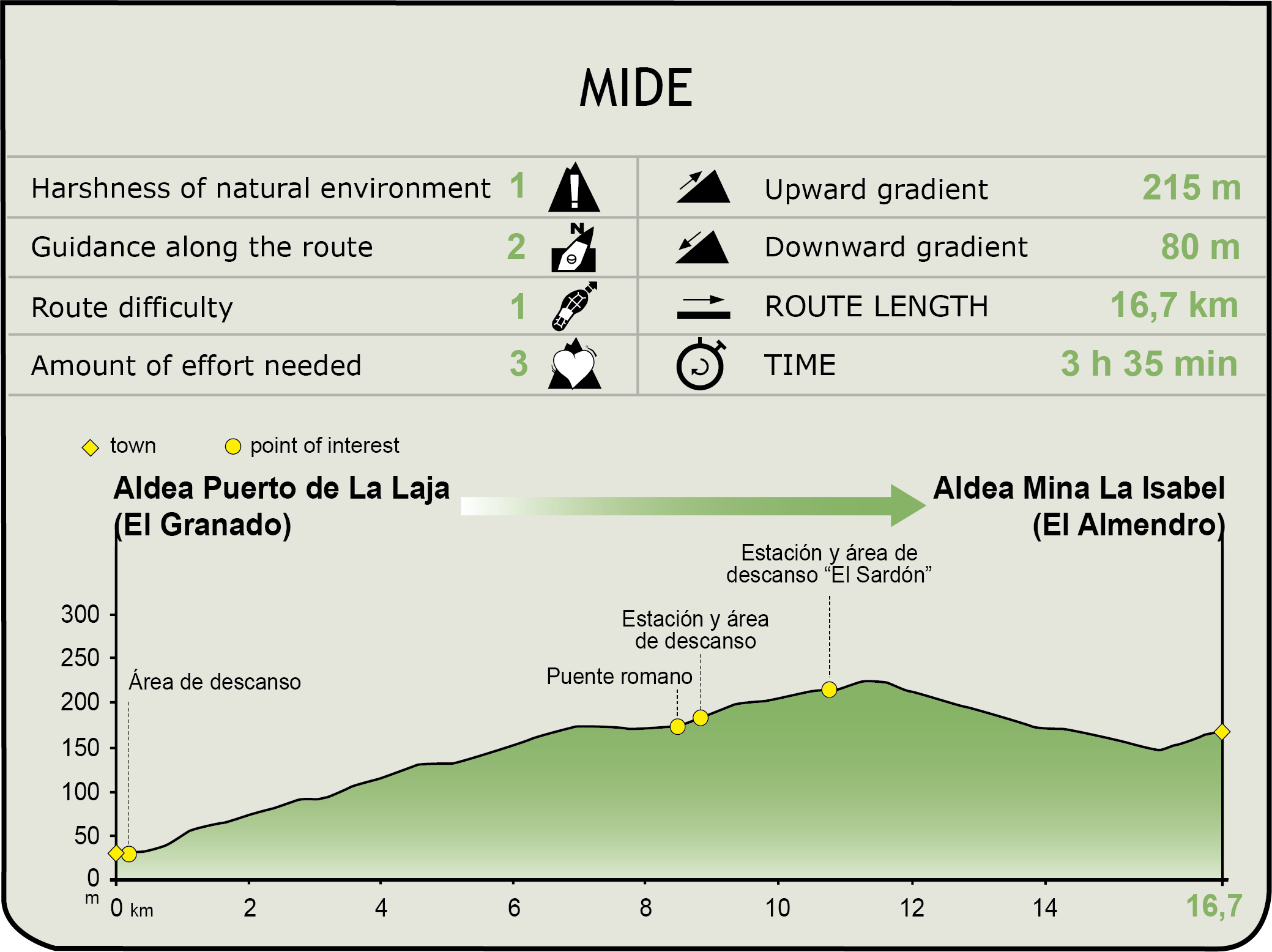
MIDE (Method for the Information of Excursions)
Featured
Further information
Puerto de La Laja
Puerto de La Laja is a small hamlet on the last navigable section of the River Guadiana, where the mining company “The Bede Metal & Chemical Co. Ltd” dbuilt a pier. For almost eighty years, tons of ore mined in the Andevalo area (Huelva), primarily pyrite and manganese, were shipped abroad from this river port. When the mining activity halted, the hamlet was gradually abandoned until it was completely uninhabited. After several years, the houses were illegally occupied, which prevented the disappearance of the hamlet. There is currently a project to build an Ecology and Sports Centre for promoting water sports in this section of the River Guadiana, including a centre for the interpretation of local historical, natural and cultural heritage.
